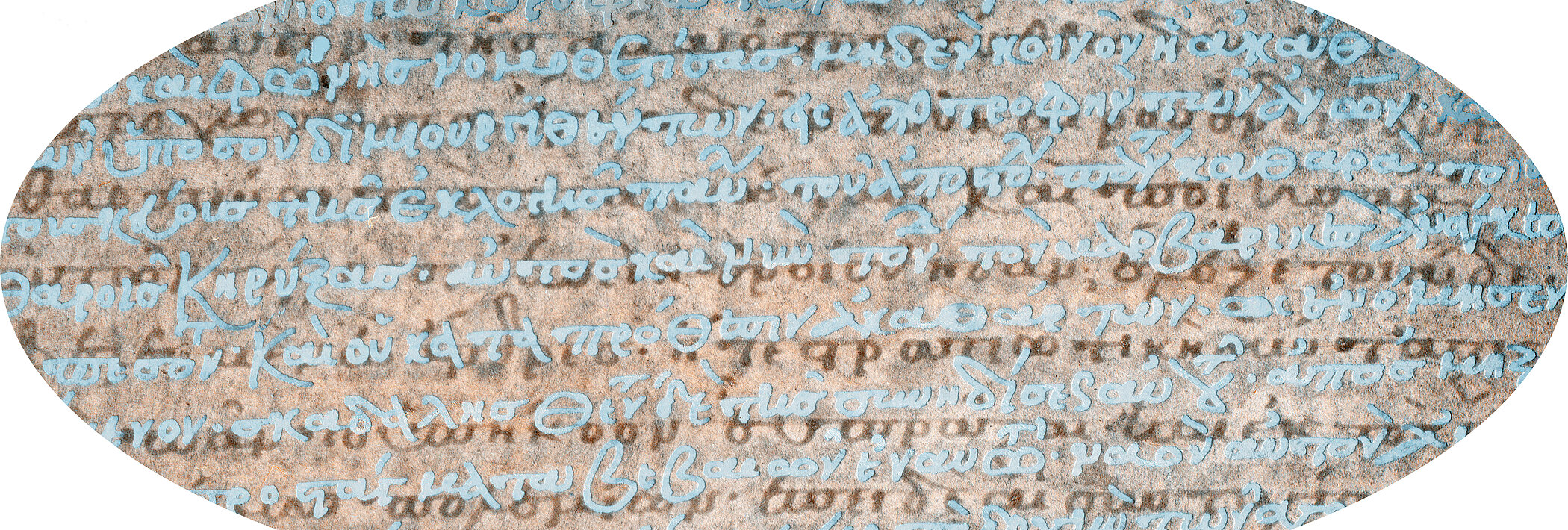Scythica Vindobonensia

♦ ♦ ♦ Text ♦ ♦ ♦
The text of the Scythica Vindobonensia alias Dexippus Vindobonensis is extraordinary rich in historical evidence. The fragments on folios 194rv and 195rv deal with a Gothic invasion at the time of Decius, Roman Emperor from AD 249 to 251. On fol. 194rv, the author reports that the Thracian Philippopolis (nowadays Plovdiv in Bulgaria) has fallen. A Gothic leader Ostrogotha is mentioned. Decius, having gathered a refreshed army of 80,000 men, decides to prevent the Goths (“Scythians”) from leaving the Empire with their rich booty. He then addresses his army, and the first part of this speech survives on fol. 194v. On fol. 195rv, a Gothic attack under Cniva (or Kniva) on a Thracian town can very likely be identified with the beginning of the capture of Philippopolis, a rich and important Ancient city. A third fragment, fols. 192v+193r, deals with an unsuccessful attack of the Goths on Thessalonica and the defensive measures taken at Thermopylae by the Greeks against the invaders, who intend to attack Central Greece. An address of the Roman general Marianus to the army follows. As for the date of this attack, the opinions of scholars vary, dating it in AD 253/254 or 254/255 or the early 260s (c. 261 or early 262).
The Vienna fragments originate most probably from the Scythica of the third-century AD historian Dexippus of Athens, a contemporary and well-informed eyewitness. The defence of Rome against the Goths (and other Germanic tribes) between around AD 250 and 275 was the subject of his historical work written in Greek and entitled Scythica (as for all these tribes, peoples of the far North, he uses the archaic name "Scythians"). Up until the discovery and the decipherment of the Vienna palimpsest of the Scythica Vindobonensia, we only had few fragments of this work preserved in excerpts or quotations by later authors.
♦ ♦ ♦ Deciphering ♦ ♦ ♦
With the technical means available in 2007–2009, Jana Grusková could decipher about 15% of the ancient text (fol. 195r) hidden in the Vienna palimpsest (see Untersuchungen, 2010, 51–53). In 2012, thanks to funding by the Austrian Science Fund (FWF), a new project started at the Austrian Academy of Sciences, led by Otto Kresten: "Important textual witnesses in Vienna Greek palimpsests" (2012–2015). Within this project, Jana Grusková together with Gunther Martin, a specialist on Dexippus, focused on further deciphering, editing and examining the Vienna fragments. In order to make the 11th-century manuscript (a Byzantine copy of the ancient text) legible, the project established a close cooperation with specialists in digital recovery of erased writings assembled by the Early Manuscripts Electronic Library (EMEL). Cutting-edge methods of imaging and image science were applied in 2013–2015. The visibility of individual characters has ranged from rather obvious to invisible. The portions of the original characters obscured by the upper text could not be made visible. Based on the resulting processed images, Grusková and Martin managed to decipher up to 60% of the text. To give other scholars access to the new fragments as soon as possible, in 2014 and 2015 they published a work-in-progress transcription of six pages (fols. 192v+193r, 194rv, 195rv) together with images and some preliminary considerations on the text:
- Fol. 192v+193r: G. Martin – J. Grusková, ‚Dexippus Vindobonensis (?)‘. Ein neues Handschriftenfragment zum sog. Herulereinfall der Jahre 267/268. Wiener Studien 127 (2014) 101–120 (mit Abb. 1–4) (for important corrigenda concerning the date etc. see Grusková – Martin, Tyche 29, 2014, 38–39; Tyche 30, 2015, fn. 2, and, in more details, J. Grusková – G. Martin, Rückkehr zu den Thermopylen, Mommsen-Tagung 2014, Stuttgart 2017, 267–281)
- Fol. 194v, 195r: G. Martin – J. Grusková, ‚Scythica Vindobonensia‘ by Dexippus (?): New Fragments on Decius’ Gothic Wars. Greek, Roman, and Byzantine Studies 54 (2014) 728–754 (with Figg. 1–4)
- Fol. 194r: J. Grusková – G. Martin, Ein neues Textstück aus den "Scythica Vindobonensia" zu den Ereignissen nach der Eroberung von Philippopolis. Tyche 29 (2014) 29–43 (mit Tafeln 12–15)
- Fol. 195v: J. Grusková – G. Martin, Zum Angriff der Goten unter Kniva auf eine thrakische Stadt (Scythica Vindobonensia, f. 195v). Tyche 30 (2015) 35–53 (Tafeln 9–11)
Subsequently, in order to reveal and examine the remaining (still illegible) 40% of the Vienna fragments, Kresten, Grusková and Martin together with Fritz Mitthof, a specialist in Ancient history, applied to the Austrian Science Fund (FWF) for new funding. The project "Scythica Vindobonensia" started in 2015. It has been led by Fritz Mitthof and Otto Kresten and conducted at both the University of Vienna and the Austrian Academy of Sciences. Additional state-of-the-art methods of digital recovery, including XRF element mapping, were applied to make the hitherto illegible parts of the palimpsest legible. The first results were published in 2017.
A newly deciphered passage of several lines has been published:
♦ From the very beginning, Gunther Martin and Jana Grusková have been working towards the ultimate goal of preparing a critical edition (editio princeps) of the Scythica Vindobonensia alias Dexippus Vindobonensis, including a comprehensive commentary on the text and extended studies on the authorship, the language and style etc. This edition will be published as soon as the complex process of digital recovery and the decipherment of the Vienna fragments have been completed and the new-revealed passages have been examined.